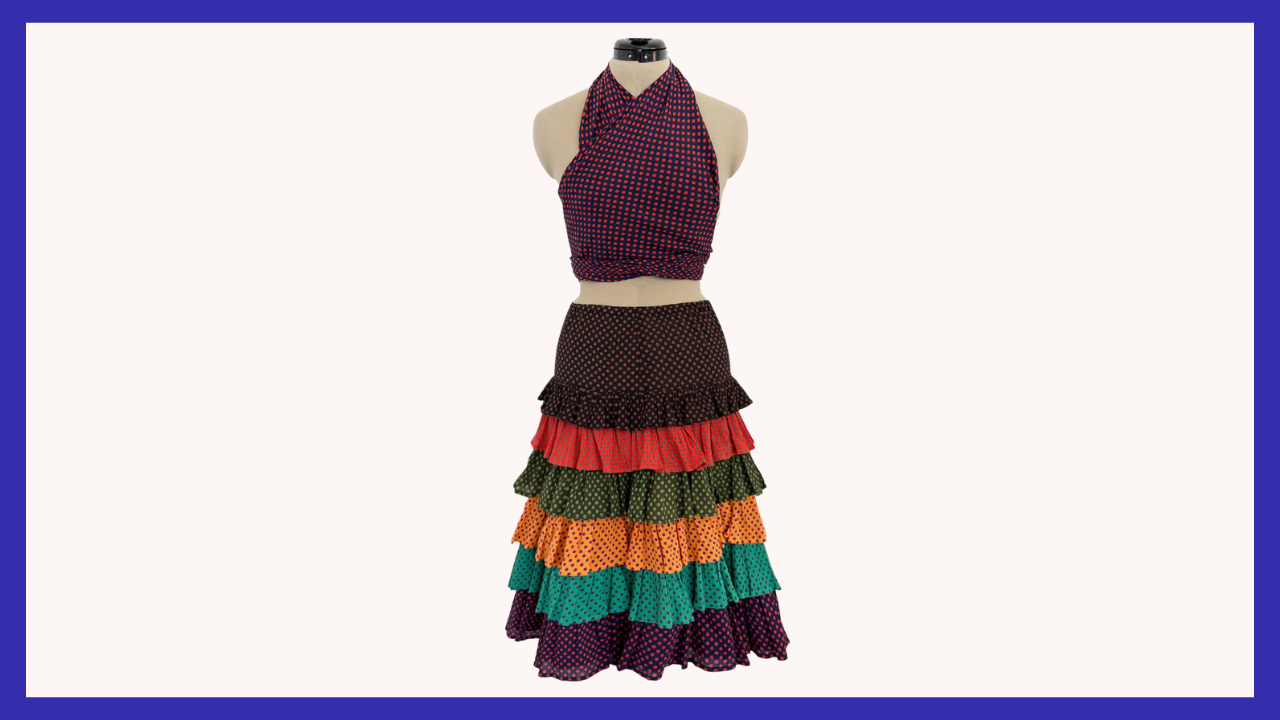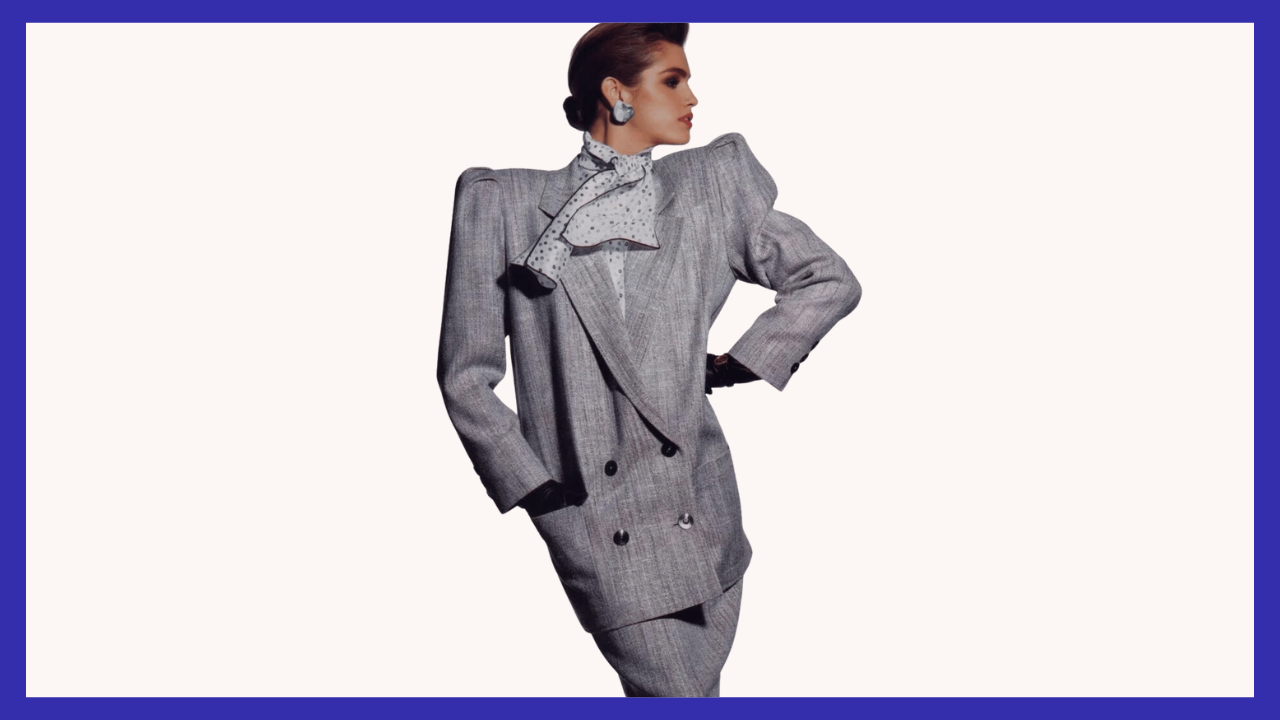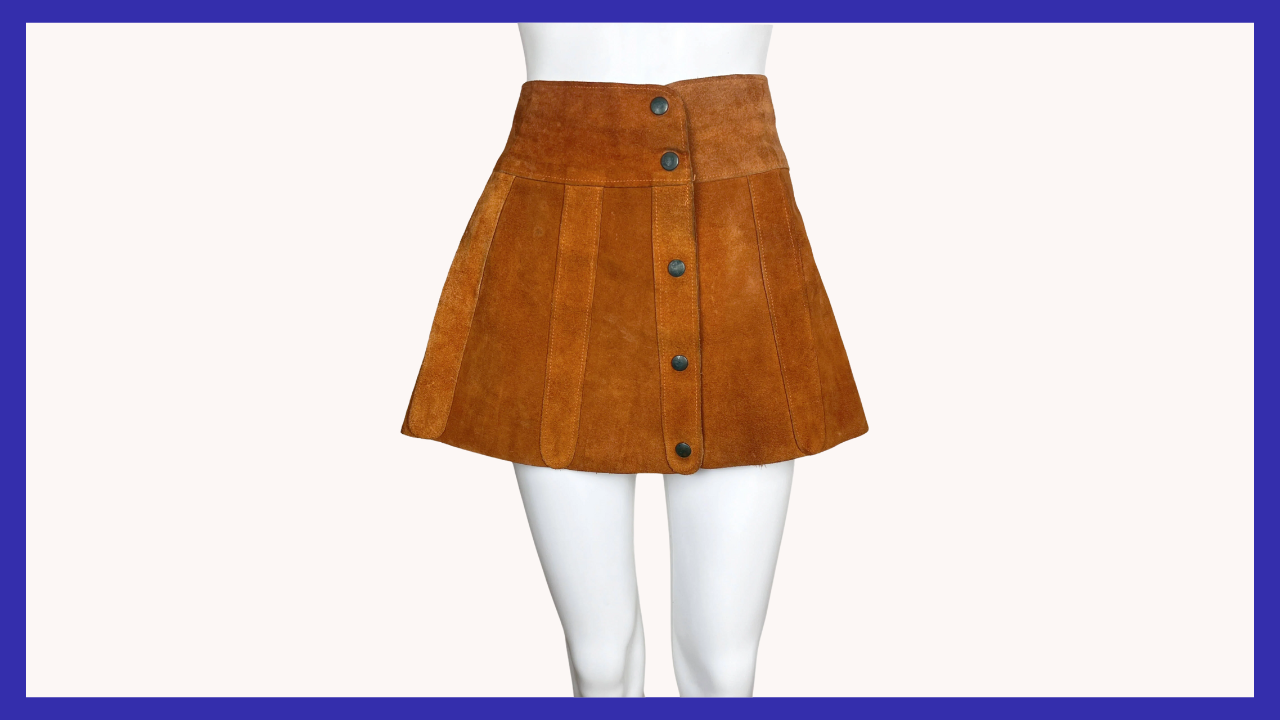AllVintageStyles
The Ultimate Vintage Fashion Encyclopedia
Ruffle Skirt

Skirt with gathered fabric tiers creating textured movement, epitomizing 1970s romantic fashion through feminine ruffled construction and prairie dress influences.
Quick Facts
- Era: 1970s (peak popularity 1970s-1980s)
- Origin: United States/Europe (romantic fashion movement and prairie dress revival)
- Garment Type: Romantic skirt with tiered ruffle construction
- Key Identifiers: Multiple fabric tiers, gathered ruffles, flowing movement, feminine silhouette
- Typical Resale Price: $45-$300 (authentic vintage pieces)
- Best For: Romantic fashion collectors, bohemian style enthusiasts, feminine vintage seekers
History & Evolution
Ruffle skirts emerged prominently during the 1970s romantic fashion movement when designers embraced feminine details and prairie dress influences that celebrated traditional craftsmanship and anti-modern aesthetics. The style represented reaction against minimalist 1960s fashion, instead emphasizing elaborate construction techniques and feminine presentation through tiered fabric manipulation. Early versions featured hand-finished ruffles and quality natural fabrics that demonstrated skilled dressmaking and appreciation for decorative feminine elements.
The mid-1970s established ruffle skirts as essential romantic and bohemian wear when prairie dress trends and Laura Ashley-style femininity influenced mainstream fashion toward soft, traditional silhouettes. The style became associated with artistic sophistication, environmental consciousness, and rejection of synthetic urban fashion, appealing to women seeking clothing that emphasized natural beauty and handcraft traditions. The romantic movement made ruffled construction symbols of feminine authenticity and creative expression.
The late 1970s and early 1980s saw ruffle construction influence both casual and formal fashion while maintaining strongest connections to romantic and bohemian aesthetics. The style survived fashion changes through its timeless feminine appeal and connection to traditional dressmaking techniques. Contemporary fashion periodically revives ruffle elements, but vintage pieces offer superior natural fabric quality and authentic hand-finished construction that reflects original romantic movement values and skilled craftsmanship traditions.
Authentication Tips
Authentic 1970s-1980s Features:
- Natural fiber construction including cotton, silk, or cotton blends with proper drape for ruffle movement
- Hand-finished or quality machine-sewn ruffles with proper gathering techniques and fullness
- Multiple tiers with authentic proportional relationships and romantic fashion construction
- Period-appropriate romantic colors including earth tones, florals, and soft feminine palettes
- Romantic fashion or bohemian brand labels with authentic 1970s manufacturing
Common Reproductions/Modern Pieces:
- Synthetic fabrics or polyester blends lacking authentic natural fiber drape and ruffle characteristics
- Machine-sewn ruffles with poor gathering techniques or inadequate fullness for authentic romantic styling
- Simplified tier construction without proper proportional relationships and romantic fashion authenticity
- Contemporary color palettes or prints not available during vintage romantic fashion periods
- Generic fashion labels without connection to authentic romantic or bohemian fashion heritage
Styling & Use Cases
- Best for romantic collectors: Pair with peasant blouses and vintage boots for authentic 1970s prairie dress styling
- Ideal for bohemian enthusiasts: Combine with flowing tops and natural jewelry for feminine romantic presentation
- Perfect for feminine fashion: Layer with cardigans or wear alone for soft, traditional romantic silhouettes
Modern styling tips:
- Balance the skirt's romantic volume with fitted tops to create proportional harmony and contemporary appeal
- Choose natural materials for accessories that complement the skirt's handcraft heritage and romantic origins
- Layer with contemporary pieces while maintaining the skirt's connection to feminine traditional craftsmanship
FAQ
Q: How can I tell if a ruffle skirt is authentic vintage construction?
A: Check for natural fiber construction with proper ruffle drape, hand-finished or quality ruffles with authentic gathering techniques, multiple tiers with romantic proportional relationships, period-appropriate romantic colors, and authentic romantic fashion or bohemian brand labels.
Q: What's the typical price range for vintage ruffle skirts?
A: Authentic vintage ruffle skirts range from $45-300 depending on construction complexity, fabric quality, and condition. Hand-finished pieces or designer romantic fashion examples command higher prices among 1970s and romantic fashion collectors.
Q: How should I care for a vintage ruffle skirt?
A: Hand wash delicate fabrics to preserve ruffle construction, machine wash cotton pieces on gentle cycle, air dry to prevent distortion of gathered tiers, and store carefully to maintain ruffle fullness and prevent crushing of decorative elements.
Q: What makes vintage ruffle skirts valuable to collectors?
A: Superior natural fiber quality representing authentic romantic fashion construction, hand-finished ruffle techniques reflecting traditional dressmaking skills, cultural significance in 1970s romantic and bohemian fashion movements, and documentation of feminine fashion revival that celebrated traditional craftsmanship and decorative construction over minimalist modern aesthetics during anti-synthetic fashion movements.
📷: Shrimpton Couture



